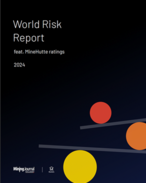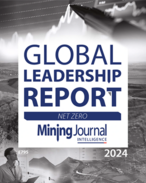After panicking about rare earths, graphite, gallium and gadolinium, geopolitics pundits are busy brushing up on antimony, the latest critical mineral to fall subject to Chinese export controls. But to ascribe every tweak to Chinese industrial policy as a salvo in an ongoing trade war with the West is to misunderstand Beijing's actual priorities. What is worse, paranoia over China is pushing Western policymakers into an incoherent "mining first" strategy that will do nothing to actually build lasting global supply chains.
While touring Baotou, the industrial heartland of Inner Mongolia, former leader Deng Xiaoping famously stated that "the Middle East has oil, China has rare earths". This has often been seen as a statement of intent, proof of a plan to leverage rare earths as a geopolitical tool. What is often overlooked is that during Deng's leadership, the country that actually controlled rare earth supply was the US, with most of the world's production coming from just one mine, Mountain Pass in California.
The rapid scale-up of rare earth production in the 1990s had less to do with monopolising supply than with diversifying it. Chinas rapidly growing industrial sector needed rare earths, and could no longer rely on the US to provide them.
The growth of the Chinese rare earth industry was helped by the closure of Mountain Pass, which happened much more quickly than anyone could have predicted, and by the drain of refining technology from Japan, which needed less raw materials as it entered its economic lost decades.
China's emerging dominance of rare earth supply was only ever downstream of its role as the key driver of rare earth demand.
It's worth looking at the only major rare earth supply chain that operates independently of China: Lynas. Originally founded as a gold company, the developer pivoted toward rare earths in the early 2000s, buying the Mt Weld mine in Australia.
But despite the world-class quality of Mt Weld, development was a slow process. Funding from the state-owned China Nonferrous Metal Mining Group was stymied by Australian investment rules. What actually pushed Mt Weld into production was a brief panic over rare earth supplies from China to Japan in 2010. Mt Weld, and subsequently Lynas' plant in Malaysia, were developed with backing from Japanese consumers. Mountain Pass-owner MP Materials, meanwhile, recently resumed the sale of separated oxides, supplying NdPr to Japanese and Korean buyers, after a long period when it relied on the sale of ore to Chinese processors.
Most other rare earth projects outside China have failed because they failed to develop similar relationships with buyers, focusing instead of hyping up political panic over-reliance on China.
China is no richer in minerals than any other country. Nor do Chinese companies have any particular advantage in technology or skills that would help them dominate mining overseas. Instead, China's dominance of the sector comes from an industrial strategy that focuses on building manufacturing. China did not become the world's factory by controlling critical minerals; rather, it developed critical mineral supply chains in order to feed its factories.
Western solipsism
At first glance the Chinese government's decision to restrict antimony exports looks like a case of mineral diplomacy, hitting out at Western economies by starving them of a critical metal. But on closer examination, the theory falls apart. Chinese domestic antimony mining has been in steep decline in recent years, as resources are exhausted. As a result, Chinese refiners have increasingly been sources of ore overseas, from Russia, Myanmar, and elsewhere.
Meanwhile demand for the metal, which is a key ingredient in a huge number of high-tech applications, is growing steadily. By restricting exports, the government can control rising antimony prices and ensure affordable metal remains available within its own economy.
Geopolitical analysis of Chinese trade policy often assumes that authorities are playing a game of four-dimensional Chess. When China exports critical minerals cheaply, it is assumed that they are trying to outcompete Western miners and refiners. When China restricts exports, it is interpreted as an attempt to hurt Western manufacturers. But there is a much simpler, and less solipsistic interpretation: Chinese industrial strategy will always prioritise supplying Chinese manufacturers.
It's easy to forget just how small the mining industry is. Total mining revenues worldwide are under $1 trillion, while China's manufacturing sector alone is worth over $5 trillion. Viewing industrial strategy through a "minerals first" lens is to disastrously invert the picture.
Cart before the horse
Western jurisdictions such as the EU and the US have suddenly realized the advantages of having an industrial strategy. This has sparked attempts by Western governments to develop critical mineral projects, either within their own borders or in friendly jurisdictions. But this strategy has yet to have much success in getting mines built. While Western governments labouriously compile their critical minerals lists, Chinese companies have been busy getting mines built and expanded, in Central Africa, Indonesia, and elsewhere.
The Western approach will not work because it puts the cart before the horse. No amount of mining will ever be enough to spur demand. But if the manufacturing sector can be revived, then there would not be a problem with supply.
The free market is perfectly able to produce mineral supplies if those minerals are needed. But the reverse is not true. Forcing critical mineral projects into operation in the West will not magically revive long-neglected manufacturing sectors, particularly when those critical minerals are selected from lists compiled by bureaucrats rather than by actual demand.
Instead, even if the mines were built, the most likely outcome would be that all the rare earths, minor metals, copper, batter minerals, and whatever else is deemed "critical" in Brussels or Washinton would just be shipped back to China, effectively subsidising their manufacturing sector even further.






















ENERGY MINERALS
The West's critical mineral policy is putting the cart before the horse
It's not a supply problem, it's a demand problem
credit: Shutterstock | Credits: Shutterstock
After panicking about rare earths, graphite, gallium and gadolinium, geopolitics pundits are busy brushing up on antimony, the latest critical mineral to fall subject to Chinese export controls. But to ascribe every tweak to Chinese industrial policy as a salvo in an ongoing trade war with the West is to misunderstand Beijing's actual priorities. What is worse, paranoia over China is pushing Western policymakers into an incoherent "mining first" strategy that will do nothing to actually build lasting global supply chains.
While touring Baotou, the industrial heartland of Inner Mongolia, former leader Deng Xiaoping famously stated that "the Middle East has oil, China has rare earths". This has often been seen as a statement of intent, proof of a plan to leverage rare earths as a geopolitical tool. What is often overlooked is that during Deng's leadership, the country that actually controlled rare earth supply was the US, with most of the world's production coming from just one mine, Mountain Pass in California.
The rapid scale-up of rare earth production in the 1990s had less to do with monopolising supply than with diversifying it. Chinas rapidly growing industrial sector needed rare earths, and could no longer rely on the US to provide them.
The growth of the Chinese rare earth industry was helped by the closure of Mountain Pass, which happened much more quickly than anyone could have predicted, and by the drain of refining technology from Japan, which needed less raw materials as it entered its economic lost decades.
China's emerging dominance of rare earth supply was only ever downstream of its role as the key driver of rare earth demand.
It's worth looking at the only major rare earth supply chain that operates independently of China: Lynas. Originally founded as a gold company, the developer pivoted toward rare earths in the early 2000s, buying the Mt Weld mine in Australia.
But despite the world-class quality of Mt Weld, development was a slow process. Funding from the state-owned China Nonferrous Metal Mining Group was stymied by Australian investment rules. What actually pushed Mt Weld into production was a brief panic over rare earth supplies from China to Japan in 2010. Mt Weld, and subsequently Lynas' plant in Malaysia, were developed with backing from Japanese consumers. Mountain Pass-owner MP Materials, meanwhile, recently resumed the sale of separated oxides, supplying NdPr to Japanese and Korean buyers, after a long period when it relied on the sale of ore to Chinese processors.
Most other rare earth projects outside China have failed because they failed to develop similar relationships with buyers, focusing instead of hyping up political panic over-reliance on China.
China is no richer in minerals than any other country. Nor do Chinese companies have any particular advantage in technology or skills that would help them dominate mining overseas. Instead, China's dominance of the sector comes from an industrial strategy that focuses on building manufacturing. China did not become the world's factory by controlling critical minerals; rather, it developed critical mineral supply chains in order to feed its factories.
Western solipsism
At first glance the Chinese government's decision to restrict antimony exports looks like a case of mineral diplomacy, hitting out at Western economies by starving them of a critical metal. But on closer examination, the theory falls apart. Chinese domestic antimony mining has been in steep decline in recent years, as resources are exhausted. As a result, Chinese refiners have increasingly been sources of ore overseas, from Russia, Myanmar, and elsewhere.
Meanwhile demand for the metal, which is a key ingredient in a huge number of high-tech applications, is growing steadily. By restricting exports, the government can control rising antimony prices and ensure affordable metal remains available within its own economy.
Geopolitical analysis of Chinese trade policy often assumes that authorities are playing a game of four-dimensional Chess. When China exports critical minerals cheaply, it is assumed that they are trying to outcompete Western miners and refiners. When China restricts exports, it is interpreted as an attempt to hurt Western manufacturers. But there is a much simpler, and less solipsistic interpretation: Chinese industrial strategy will always prioritise supplying Chinese manufacturers.
It's easy to forget just how small the mining industry is. Total mining revenues worldwide are under $1 trillion, while China's manufacturing sector alone is worth over $5 trillion. Viewing industrial strategy through a "minerals first" lens is to disastrously invert the picture.
Cart before the horse
Western jurisdictions such as the EU and the US have suddenly realized the advantages of having an industrial strategy. This has sparked attempts by Western governments to develop critical mineral projects, either within their own borders or in friendly jurisdictions. But this strategy has yet to have much success in getting mines built. While Western governments labouriously compile their critical minerals lists, Chinese companies have been busy getting mines built and expanded, in Central Africa, Indonesia, and elsewhere.
The Western approach will not work because it puts the cart before the horse. No amount of mining will ever be enough to spur demand. But if the manufacturing sector can be revived, then there would not be a problem with supply.
The free market is perfectly able to produce mineral supplies if those minerals are needed. But the reverse is not true. Forcing critical mineral projects into operation in the West will not magically revive long-neglected manufacturing sectors, particularly when those critical minerals are selected from lists compiled by bureaucrats rather than by actual demand.
Instead, even if the mines were built, the most likely outcome would be that all the rare earths, minor metals, copper, batter minerals, and whatever else is deemed "critical" in Brussels or Washinton would just be shipped back to China, effectively subsidising their manufacturing sector even further.
RELATED ARTICLES
THEMES:
TOPICS:
< PREVIOUS ARTICLE
China to limit antimony exports
NEXT ARTICLE >
Euro Manganese pens offtake deal with US cathode specialist
Get the Mining Journal Newsletter delivered free each day
FROM OUR PARTNERS
PARTNER CONTENT
Macquarie Arc: Elephants hiding in plain sight
PARTNER CONTENT
BHP builds 'beautiful' Xplor community